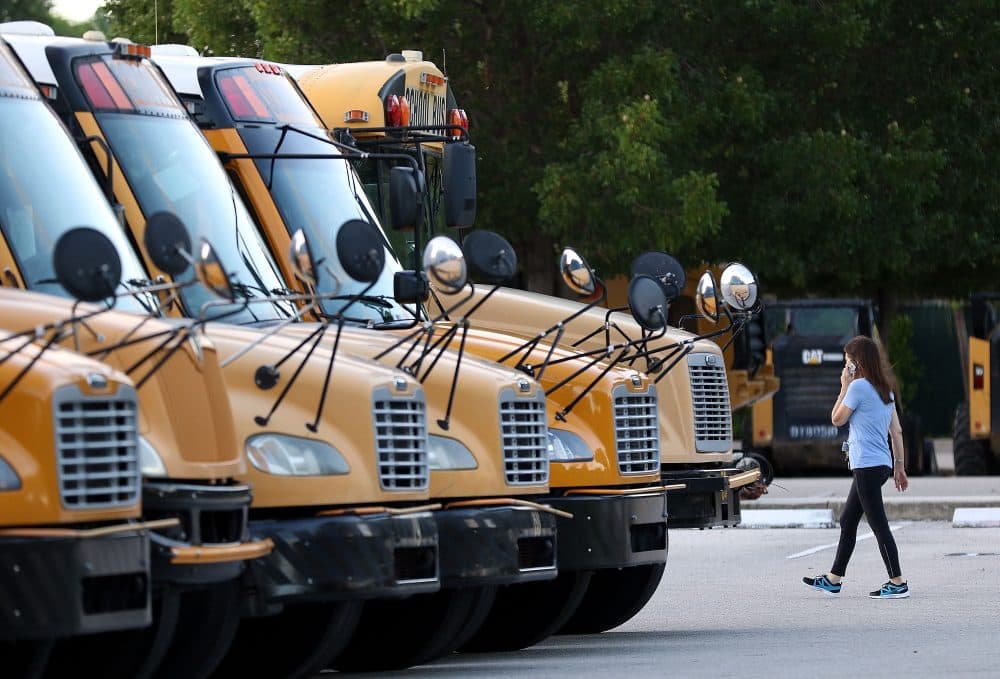Advertisement
The Link Between Academic Rigor And Decreased 'Risky' Behavior Among High Schoolers
Resume
What happens when schools increase their math and science requirements? Well, according to a recent study in the American Journal of Health Economics, it's correlated with decreased risky behavior, including binge drinking and drug use.
The study followed more than 100,000 students in 47 states over 10 years. Washington State University professor Benjamin Cowan, who co-authored the study, speculates that a more rigorous curriculum not only gives kids less time to drink, but also that it inspires them to think of higher education possibilities and better choices.
Cowan joins Here & Now's Robin Young to talk about the study.
Interview Highlights
On the study
"We used data from the youth risky behavior study — it's a survey of high school students done by the CDC — and reported levels of risky behaviors, including heavy drinking and other kinds of substance use, are high among teens. We looked at whether states that required students to take more math and science courses to receive a high school diploma, whether changes in those requirements were correlated with changes in reported risky behavior, and found that reported binge drinking drops when those requirements go into effect.
"In an observational data study, it's very difficult to pin down causality. At the same time, we used several different kinds of robustness checks to make sure that this correlation holds up. And it gives certainly some evidence to there being a causal connection, though we stopped short of saying that we know that for sure."
On why this decrease in risky behavior is more prevalent among nonwhite males
"We think that it may be the case that students of color attending high schools in the United States may be attending schools that are more likely to change their high school requirements when the law changes. Some high schools, particularly those in maybe more affluent areas, are already requiring their students to have the higher number of math and science courses. And so that's one potential explanation, though it's only one of many."
"We see this not as being the only thing to say on this subject, but almost certainly fitting into a larger picture. And with the goal of helping all young people do as well as they can."
Benjamin Cowan
On the argument that these heightened requirements cause more stress, and might cause more students to drop out, skewing the findings
"I'll say a couple of things about that. One is that we took considerable measures to try to rule that out as a possibility. So one thing we did is we actually looked directly at whether students are more likely to drop out with an increase in the high school requirement. And we did not find evidence that that was the case in our study period. The second thing we did is we dropped older students who tend to be more likely to have left high school. And with younger students, for which dropout rates are very low, we continued to find evidence of an effect of the requirements on their drinking activity."
On where we go from here
"We see our study fitting into a much larger picture about how best to help young people. So we would not suggest that, in any circumstance, that a magic bullet is to make whatever curriculum a school has more rigorous. There may be cases where it's already plenty rigorous. There may be students who would need special attention if their curriculum were to become more rigorous. So, we see this not as being the only thing to say on this subject, but almost certainly fitting into a larger picture. And with the goal of helping all young people do as well as they can."
On why this correlation might exist
"Certainly how they spend their time, you know, and if that changes with respect to the rigor of their courses at school, could be one pathway. Another potential pathway is that by increasing the rigor of high school courses, they start to become more interested in postsecondary education, in college and in different kinds of career paths. And that leads them to make different choices in the present about what they're willing to take a risk on."
This article was originally published on May 15, 2018.
This segment aired on May 17, 2018.